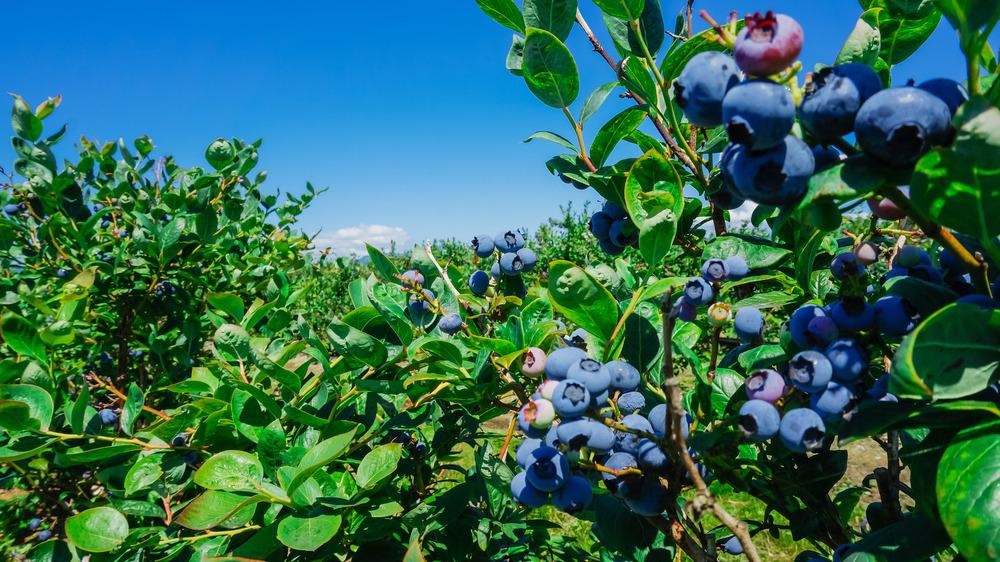In a study recently published in Remote Sensing, University of Maine scientists led by graduate student Catherine Chan have outlined how imaging spectroscopy can be used to predict water stress in wild blueberry barrens. The study sheds new light on how spectroscopy can be used for managing water resources sustainably.

Image Credit: Trong Nguyen/Shutterstock.com
Imaging Spectroscopy to Manage Water Resources
This latest research was co-authored by University of Maine faculty members Daniel Hayes and Yongjiang Zhang, Schoodic Institute forest ecologist Peter Nelson, and blueberry producer Wyman’s agronomist, Bruce Hall.
Imaging spectroscopy is an analysis technique used to study the chemical makeup of samples. It is a non-destructive analysis method that can also be performed remotely.
Images are captured by specialist cameras mounted on drones, satellites, and other remote sensors. These images record different wavelengths of light reflected off the subject. The spectral data – different colors or wavelengths reflected from the subject – provides information about the subject’s chemical makeup.
The benefit of imaging spectroscopy, which uses multiple camera images taken from multiple angles with different wavelengths of emitted light, is that it can measure spectral data more accurately than counterparts.
Imaging spectroscopy provides data on more wavelengths, so that wide spectral bands become narrower, allowing for more granular analysis.
Spectral data can reveal nutrient levels, chlorophyll content, and other indicators of environmental and ecosystem health that can be useful for conservationists, farmers, and land managers alike.
The research found that imaging spectroscopy could reliably be used to predict whether blueberry crops will have enough water to grow – in combination with other analysis methods and pre-existing models.
This reliable forecast in turn can lead to better management of water resources for blueberry producers. Overwatering can damage crops just like underwatering, and irrigation planning is key to productive farming.
How was Imaging Spectroscopy Data Acquired?
The University of Maine researchers collected the data for this study with a drone carrying a spectrometer that could capture visible and near-infrared light. This device was used to photograph blueberry crops in Debois, Maine.
Images were processed to measure light spectra reflected from the plants, indicating the crops’ chlorophyll levels and other properties. These properties in turn are a good indication of water potential in the crops, which drives water flow and water stress.
This data was validated by physical samples collected by the researchers. The team gathered branches from blueberry plants to physically assess their water potential.
Imaging spectroscopy data, as well as the ground samples, were incorporated into separate models used to estimate water potential and predict water stress. The models were developed using machine learning and statistical analysis.
Results in both models were comparable, which researchers say demonstrates that imaging spectroscopy can be used to predict water stress in blueberry crops.
Applications for Blueberry Growers
The researchers highlighted that this approach should be immediately valuable to blueberry growers. Blueberry growers need as much information as possible to sustainably manage water resources, especially considering the increasing frequency of droughts due to climate change.
Imaging spectroscopy is an important predictive tool that can be used in agriculture today. With dwindling soil quality, water resources, and available land – such tools are more necessary now than ever.
References and Further Reading
Chan, Catherine et al. (2021) Predicting Water Stress in Wild Blueberry Fields Using Airborne Visible and Near Infrared Imaging Spectroscopy. Remote Sensing. [Online] https://doi.org/10.3390/rs13081425
University of Maine (2021). Imaging Spectroscopy Can Predict Water Stress in Wild Blueberry Fields, Says Study. Phys.org. [Online] https://phys.org/news/2021-07-imaging-spectroscopy-stress-wild-blueberry.html
Disclaimer: The views expressed here are those of the author expressed in their private capacity and do not necessarily represent the views of AZoM.com Limited T/A AZoNetwork the owner and operator of this website. This disclaimer forms part of the Terms and conditions of use of this website.